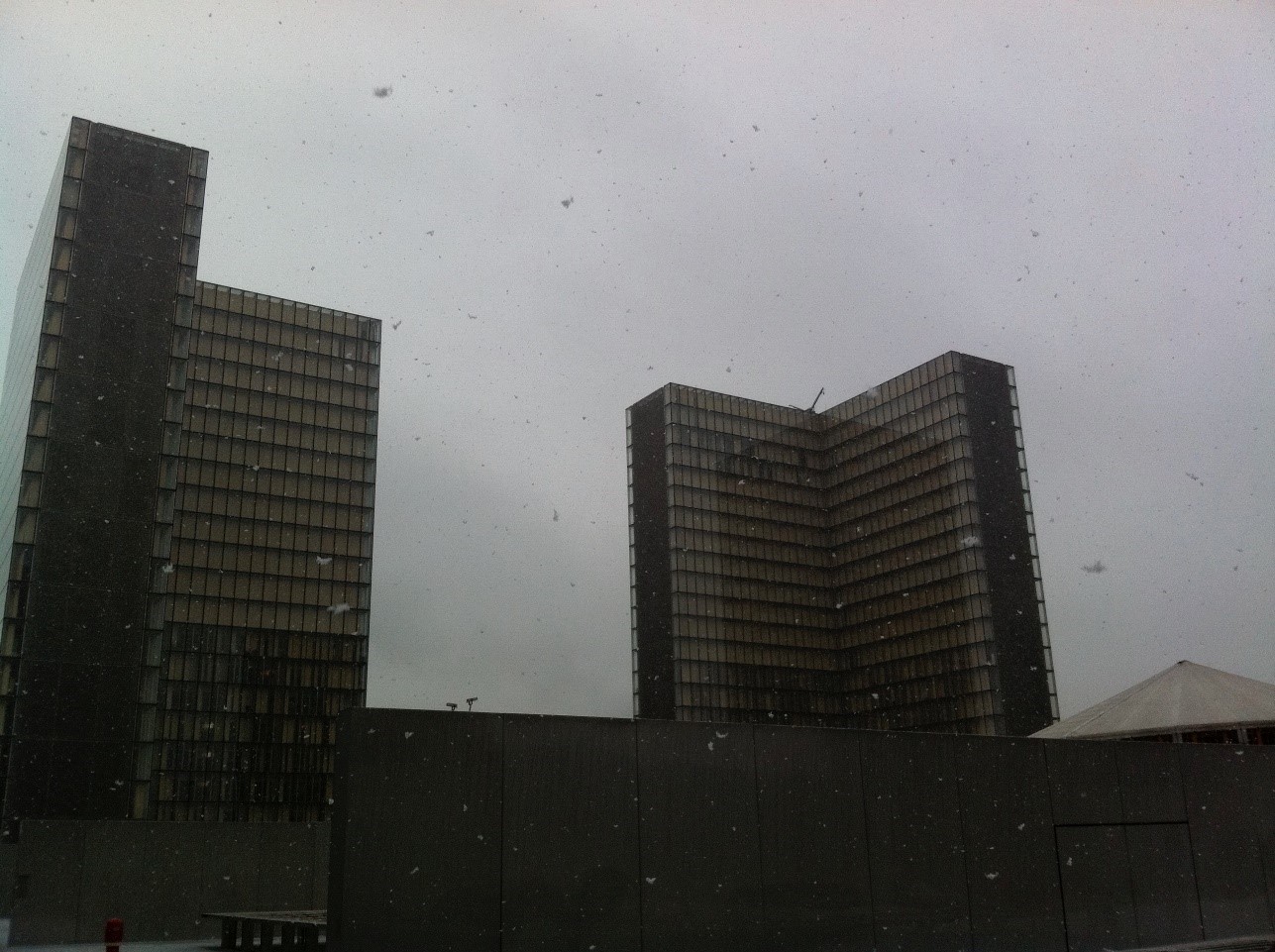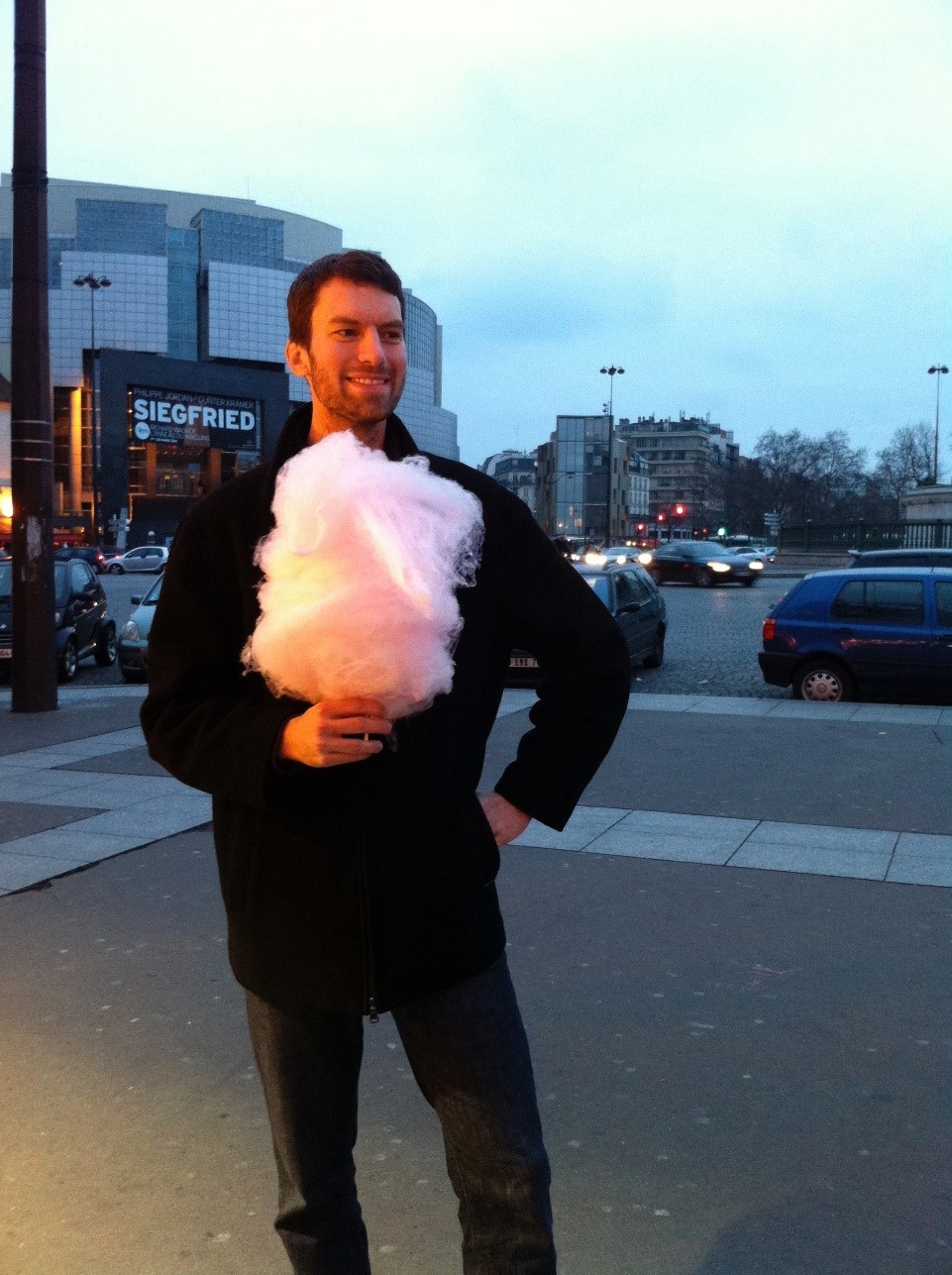
In a dreary snow I trudged to the BNF seeking words in old films, which would lead me to the old military installation at Bois d’Arcy where the AFF stores its flammable celluloid.
Written by guest blogger Grant Wiedenfeld.
Subtitles must be the answer, I thought. The question of how montage developed has fascinated film and media scholars since people began taking the subject seriously in the 1920s. Lumiere and Dickson simply set up the camera to record a stage performance, then by the 1910s films were full of camera angles, editing, and suave acting that told long stories silently. How did this language-like system develop, and set apart cinema from theater and photography?
Most accounts of the evolution of montage had overlooked the subtitle, a silent cinema title card also known as an intertitle. I thought that it must have played an important yet transitional role, like a crutch or training wheel that was thrown off. So I set off for the archives in Paris with a Lurcy Fellowship, determined to count every subtitle in every film that still survives from the crucial years between 1905 and 1910. If I could show that subtitles grew statistically in proportion to shots and edits, it would prove that subtitles were carrying an important narrative burden and help explain the magical appearance of montage.
But once I got in the archive, I did not find the evidence I was looking for. Subtitles were poorly preserved because they were considered uncinematic. More devastating was the fact that no clear trend emerged in the films where I did find them. Subtitles create a fascinating play between word and image that has stimulated a strong and growing body of scholarship; but subtitles indeed appear to be peripheral to the development of visual storytelling devices.
However, in the process of counting all the shots I stumbled upon a significant trend in the data. Some films would repeat shots from the same camera setup, alternating back and forth. Meticulously counting over 500 films demonstrated that one filmmaker was repeating shots more frequently than everyone else: D.W. Griffith at the Biograph Company. Once hailed as the inventor of montage, then debunked as mere self-promoter, I had stumbled upon a halfway point that clarified his contribution. Griffith borrowed devices from French and British precedents, but his short films at Biograph had a remarkable ratio of shots to camera setups. He was using the devices more frequently and fluently than anyone else, on a regular basis. The story gets more interesting when we consider that the studio facilities at Biograph inhibited him from using other techniques, like a mobile camera, so he went wild with crosscutting from a limited number of setups. In this article I make the case that Griffith specifically added speed to the practice of editing in 1909 that all the other companies would adopt. This aspect of Griffith has little to do with his white populist ethos, whose racist side is well known (I explore his progressive side for a recent collection of essays edited by Charlie Keil, UToronto Professor and Principal of Innis College), and more to do with this background in theater and the economic conditions he encountered.
Even though the hypothesis that brought me to the archive was wrong, my findings show that there is certainly still new knowledge to be discovered there. I’m grateful for the archivists I worked with in Paris, especially at the Archives Françaises du Film, and others stateside who supported what must have seemed like a wild goose chase.
The Country Doctor (D.W. Griffith, 1909)

Grant Wiedenfeld earned a PhD in Comparative Literature and Film & Media Studies from Yale University. His chapter “Progressive Pastoral” on five Biograph short films is collected in A Companion to D.W. Griffith (2018), edited by Charlie Keil. He has also published work on André Bazin’s view of animation and experimental film, and on the interplay of style and history in Gustave Flaubert’s descriptive landscapes. He is Assistant Professor of Media and Culture in the Mass Communication Department at Sam Houston State University. His latest article in the Canadian Journal of Film Studies entitled “Up-to-Speed Cinema: An Elucidation of Griffith’s 1909 Contribution to Montage and Representation, through the Ratio of Shots to Camera Setups” is free to read for a limited time here.
Comments on this entry are closed.